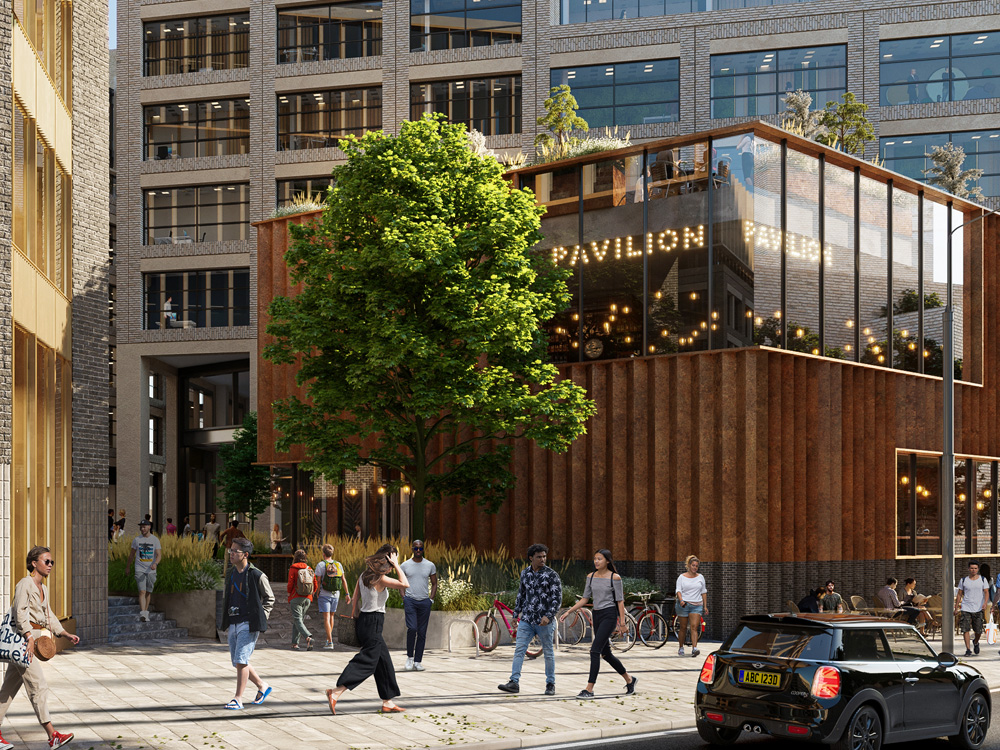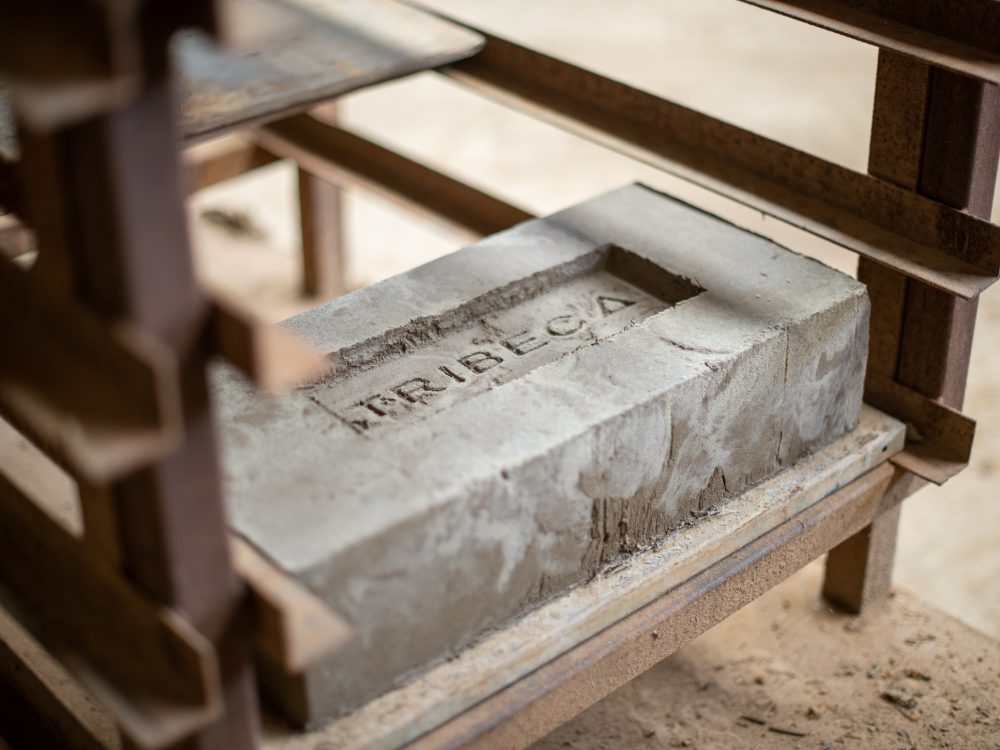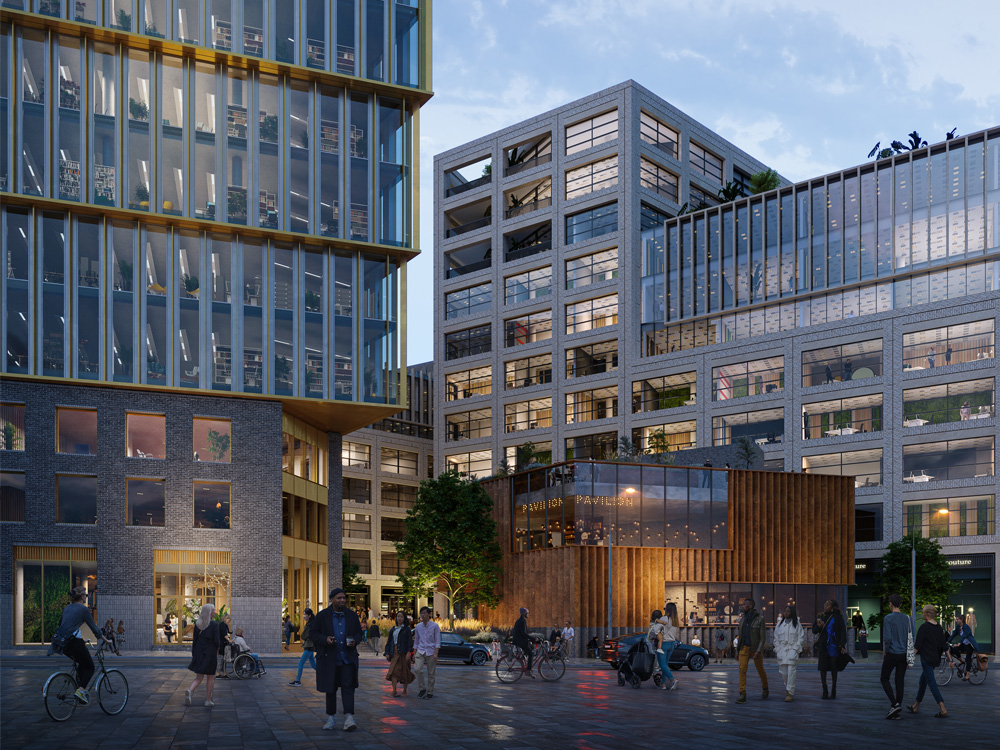From grey to green
The Tribeca neighbourhood is emerging on the location of a former Royal Mail facility – a large monolithic structure referred to as the Ugly Brown Building – that occupied the entire site, leaving little space for nature. Prior to the new development coming forward, it was an ecologically barren place with only a few clusters of trees and shrubs confined to small gaps in the built form.
Working closely with Camlins Landscape Architects and Aspect Ecology, Reef is now opening up the site for people and wildlife, seamlessly stitching together a sequence of existing and new open spaces to form a high-quality public realm with a distinct aesthetic. Regent’s Canal immediately to the east is a Site of Importance for Nature Conservation (SINC) and the Tribeca landscape will become an integral part of the wildlife corridor along the canal, which is used by bats, birds and insects.

Tribeca achieved planning approval prior to Biodiversity Net Gain (BNG) and the Urban Greening Factor (UGF) policies came into effect, yet from the very outset the ambitious landscape design aspired to optimise green space on all levels of the development and generate a significant uplift in ecology and biodiversity.
From a landscape perspective, this urban location is steeped in challenges, from the traffic on adjacent streets and the high footfall on the site, to overshadowing and level changes. And like all developments, Tribeca is facing the impacts of a changing climate, from extreme weather events to a more gradual shift in temperatures and species distribution. The landscape design has therefore been carefully considered to respond well to the site’s microclimatic conditions, and Camden’s Biodiversity Action Plan has been pivotal to guide decisions towards safeguarding biodiversity in the borough long-term.
Across the public realm will be a mix of native and non-native plant species that are well adapted to the UK climate, all chosen to contribute to both placemaking and biodiversity. At ground level, an undulating hard surface with slopes and terraces will create an accessible terrain that connects the canal side with St Pancras Way and Granary Street. The surface will be punctuated by planters that amplify the greening in compact pockets, blending a playable boulder landscape with trees and a biodiverse understory of tall grasses, nectaring flowers and fruiting plants that will attract birds and pollinating insects. The planting design will add excitement all-year-round, with different species flowering and bursting with colour throughout the different seasons.
The tree species have been selected because they are wildlife-friendly, robust and resilient to urban conditions. In the central plaza, shade-tolerant, deciduous trees such as honey locust and multi-stem Himalayan birch will provide shade in summer and allow sunlight to filter through in the winter. Native field maples and rowan trees – species suited for a wetter environment – will align the canal edge whilst the ubiquitous London plane will dot the perimeter to blend with the surrounding street trees.
Inaccessible to people, the roofs will become havens for wildlife. Wind, frost and drought resistant plants such as grasses, herbs and succulents will dominate and photovoltaics will be installed above the planted surfaces to allow the landscape to flourish underneath. Bee bricks will be integrated into the façade and rooftop insect hotels will shelter solitary bees, ladybirds and spiders. Log piles, which mimic dead and fallen trees, will provide food and shelter for a wealth of wildlife including worms, wood-boring insects and beetles. Bird and bat boxes at high level, well above street lights and lit units, will attract birds and bats from the Regent’s Canal flight path.
The Tribeca landscape will inject much needed greenery in this central location, boosting the ecology and biodiversity of the site. Whilst designed to optimise urban wildlife conditions, the design will also create a healthier and more pleasant environment for people by absorbing airborne particles, reducing noise, mitigating the heat island effect and creating new and welcoming recreational spaces.


